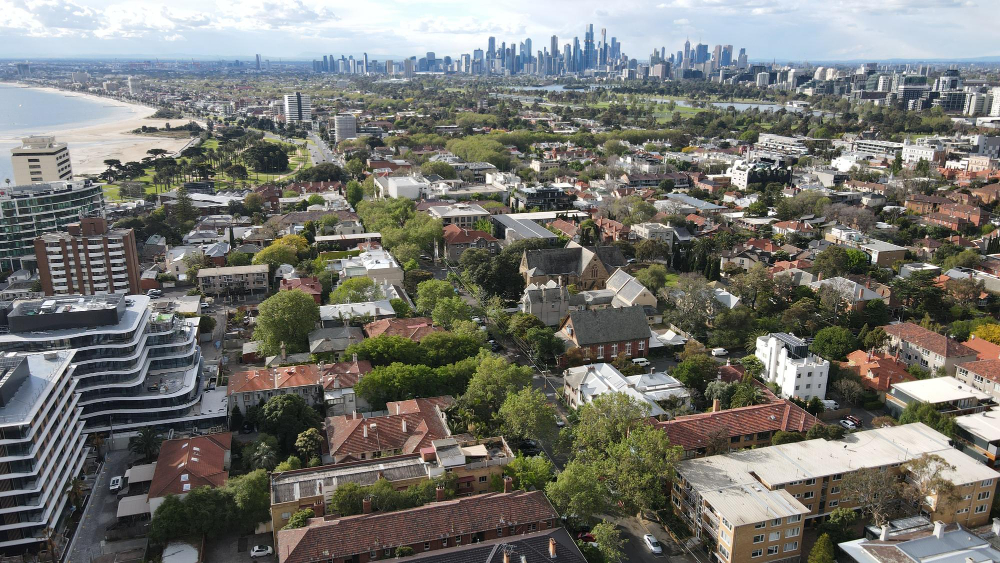Australians aren’t waiting for their super fund to “sort itself out” anymore. A record number are setting up self managed super funds (SMSFs), and more of that money is being steered into property rather than the sharemarket. Bricks and mortar feel real. You can picture the street, the tenant, the rent turning up. For a lot of people, that feels safer than a line of code on a statement.
But there’s a catch.
The same urge to “take control” can push people into the wrong property, the wrong structure, or into the hands of a smooth seminar spruiker. One bad loan or poorly chosen off-the-plan deal inside super, and you are not just nursing a dud investment, you are putting your retirement on the line under the ATO’s microscope.
This article is here to slow that down in a good way. You will get a clear explanation of how SMSF property investing actually works, who it suits, the rules you cannot ignore, and the simple filters that help you tell a solid strategy from a sales pitch. By the end, you will have a better sense of whether using your super to buy an investment property is a smart move for you, and what to do next if it is.
Along the way, you will see how using data and proper support beats guesswork. That is where AbodeFinder fits in as a data-led buyer agency and property consultancy, helping you use evidence, strategy and on-the-ground experience instead of hope and a glossy brochure.
Why more Australians are using SMSFs to buy property
From default industry super to “I want control”
For most people, super starts in a very hands-off way. You get your first job, your employer picks a default retail or industry fund, and your retirement savings disappear into a pooled mix of shares, property, bonds and cash that someone else manages. You are a member of the fund, but you are not the one calling the shots. The trustee is. They decide where your money goes within their menu of options, they control the reporting, and they carry the responsibility for compliance with the regulator.
A self managed super fund works very differently. In an SMSF, the members are also the trustees. You sit in the driver’s seat. You set the investment strategy, choose the assets, and work with the accountant, auditor and advisers who help keep the fund onside with the ATO. That extra control is the whole point for many people who feel let down by performance, service issues or scandals in larger funds.
This is where the question from the transcript lands hard: who do you trust most with your money? For most people, the honest answer is “myself, as long as I have someone to guide me”. Property fits that mindset neatly. You can see the house or unit, you understand the suburb, you can drive past it. That feels very different to owning a slice of a managed fund full of companies you have never heard of. Even though an SMSF can invest in many asset classes, property often becomes the way people express that desire for control in a tangible way.
The rise of SMSF property investing
SMSFs now hold a significant chunk of Australia’s super pool. There are more than 600,000 SMSFs with over 1.4 million members, controlling hundreds of billions of dollars in retirement savings, and the sector has continued to grow as more people set up their own funds each year. A meaningful portion of that money is in direct property, both residential and commercial, along with a growing number of limited recourse borrowing arrangements that allow SMSFs to use loans to buy investment property.
Why are so many of those funds drawn to property rather than shares? There are a few recurring themes:
-
Perceived stability
Many trustees see Australian property as less volatile than shares. Prices might move in cycles, but they do not see the same daily swings they see on market charts.
-
Comfort with bricks and mortar
People have grown up around property. They have rented, bought, sold or renovated homes. That lived experience makes property feel more understandable than global equity markets or complex managed funds.
-
A focus on retirement income
A well chosen investment property inside an SMSF can produce rent that helps fund pension payments in retirement, with the potential for long term capital growth on top. For many trustees, that mix of income and growth is exactly what they want their super to do.
Put those threads together and the trend makes sense. As trust in big funds gets tested and more information about SMSFs reaches everyday investors, the idea of using super to own a carefully chosen investment property feels less like a fringe strategy and more like a natural way to have real control over a retirement asset you can actually understand.
When does an SMSF for property actually make sense?
Balance, time frame and contribution power
There is a common belief that there is a single balance where an SMSF suddenly becomes “worth it”. In reality, advisers look at a range, not a magic number. You will often hear figures like $250,000, $500,000 or even $1 million discussed as sensible starting points, especially when the goal is to buy property. Property is chunky, and it comes with extra costs such as stamp duty, lending fees and ongoing expenses, so the fund needs a bit of weight behind it.
What really matters is the whole picture. Your current balance, how long you have until retirement, how much you and your employer are likely to contribute, and whether the fund can stay diversified after you buy a property all play a role. A couple in their forties with a combined balance in the mid-$200k range and strong incomes might be in a very different position to someone in their late fifties with the same balance and limited contribution capacity left.
Younger investors with solid incomes and plenty of contribution years ahead can sometimes start a little leaner, as long as there is a clear plan. That means running the numbers on contributions, checking that loan repayments are realistic, and making sure the fund will not end up with one big property and no cash buffer. Control over your money is powerful, but control backed by a safety margin is what protects your retirement.
Your reason has to be stronger than the sales pitch
This is where a lot of SMSF property stories split into two very different paths.
On one path, people attend a polished property seminar, get excited about the idea of “using your super to buy property”, and are quickly pushed into setting up an SMSF purely to buy one shiny property from the promoter’s stock list. The whole structure is built around making that sale. The fund ends up heavily concentrated in a single asset, often in a fringe estate or high-rise project that relies on very optimistic growth to make sense.
On the other path, people start with a strategy, not a sales pitch. They ask themselves:
-
What role should property play in my retirement plan?
-
Roughly how many properties, in what price band, and what level of rent and growth do I actually need?
-
How do I keep some diversification so my retirement is not hanging off one postcode?
In that second path, property becomes a slice of the pizza, not the whole thing. The SMSF might still lean towards property compared to a default fund, but there is a plan for cash, fixed income or other assets, plus a conscious decision about how much risk to take.
SMSF property suits trustees who want long term control and flexibility, are prepared to learn the rules, and are willing to be guided by professionals who work in this space every day. It is a poor fit for people hunting for a quick fix or a shortcut into the market because they feel behind. If your main reason is “the seminar told me this is the only way I’ll ever get ahead”, that is a sign to pause and get proper advice before you sign anything in your super’s name.
How buying property in an SMSF actually works
What you can buy and the ATO rules you cannot ignore
Before you even think about suburbs, there are some hard rules that sit around SMSF property. These are not “nice to know” – they are the line between a compliant fund and a very expensive problem.
At a high level, property inside an SMSF has to pass three big tests:
-
Sole purpose test
The property has to exist purely to provide retirement benefits (or death benefits to your beneficiaries). If the real purpose is to give your kids cheap rent, help a mate offload a dud townhouse, or run some side deal, you are already off track.
-
No personal use for residential property
If your SMSF owns a residential property, you and your related parties cannot live in it, holiday in it or rent it. No staying there on weekends, no putting adult children in at “mates rates”, no renting it to your cousin. It has to be a genuine investment with arm’s-length tenants.
-
Arm’s-length dealings and banned schemes
Every transaction has to be on normal commercial terms – rent, purchase price, expenses, everything. If the numbers do not look like a normal investor deal, it will raise questions. The ATO also takes a very dim view of any structure that looks like a way to get early access to super or to funnel money to a developer or promoter.
This is why “too good to be true” offers are so dangerous, especially for younger Australians desperate to get a foothold in the market. Offers that promise tiny deposits, guaranteed returns and “we handle everything” can be a cover for inflated prices, poor quality stock and arrangements that do not pass the rules above. On paper it looks like you own an investment property in super. In reality, you might be overpaying for something that could hold your retirement back for decades.
Paying for the property: cash purchase or SMSF loan
Once you know the rules, the next question is how your fund will actually buy the property. There are two common paths.
-
Buying outright with existing super
Here, the SMSF rolls in members’ balances, builds up cash and then pays for the investment property in full. There is no loan; the fund simply owns the property. This keeps life simpler. There is no lender, no interest bill and no loan covenants to think about. The trade-off is that you need a much larger balance up front, and you still want enough left over for diversification and a cash buffer.
-
Using a limited recourse borrowing arrangement (LRBA)
If the fund does not have enough to buy outright, you can use a special type of loan structure called a limited recourse borrowing arrangement. The lender’s security is limited to the property held in that arrangement, which is why banks see SMSF loans as higher risk and price them that way.
That means:
-
Larger deposits than a standard home loan.
-
Higher interest rates.
-
Stricter lending criteria and paperwork.
-
Because the deposit needs to be chunky, a big part of the fund’s money can end up tied in one property. That has two knock-on effects:
-
Liquidity – if all your super is in one geared property and rent stops or expenses spike, the fund can feel the pinch quickly.
-
Diversification – the more you put into one property, the less you have left for other assets that could smooth the ride over time.
A good adviser will model different scenarios so you can see what happens if interest rates rise, rents fall or contributions slow down, before you sign up to a loan inside your super.
Costs that can quietly eat your retirement
Property in an SMSF is not just “buy the house and wait”. There are layers of cost that need to be counted, or they will quietly erode your retirement savings. Key items include:
-
Fund setup and advice – establishing the SMSF, building the strategy, and making sure the structure is right from day one.
-
Legal work – trust deeds, corporate trustee setup (if used), and LRBA documents if you are borrowing.
-
Stamp duty – paid by the SMSF on the purchase, just like any other buyer.
-
Bank and loan fees – application fees, legal review, ongoing loan charges for SMSF lending.
-
Property expenses – property management, rates, insurance, repairs, vacancies and any body corporate fees.
-
SMSF running costs – annual audit, financial statements and tax return, plus any ongoing advice you choose to use.
In a large retail or industry fund, you usually pay percentage-based fees. As your balance grows, the dollars you pay rise with it. With an SMSF, many of the core costs are flat or close to it – the audit, tax return and some professional fees do not double just because your balance does.
That is why SMSFs often suit higher balances. The fixed costs get spread over more money, so the percentage cost falls as the fund grows. But that only works if you are honest about all the costs up front. Ignoring them and only looking at the property’s purchase price is how people end up with a fund that looks impressive on paper but is being nibbled away in the background.
Strategy first: why a single property is not a plan
The “pizza slice” approach to SMSF property
Buying one property inside your SMSF can feel like a big achievement. You have turned invisible super into a real, physical asset. The trap is thinking that one property on its own equals a complete retirement strategy. It does not.
A simple way to picture this is as a pizza. Your SMSF is the whole pizza. Each slice is a different asset or type of investment. If you put your entire fund into one property, you are basically sitting there with a single giant slice and nothing else. If something goes wrong with that property, there is nowhere else in the fund for returns to come from.
A stronger approach is to use property as one slice of the pizza, even if it is a generous one. The rest of the fund can still hold other assets that help balance things out over time. That might include:
-
Cash or term deposits to cover expenses and provide a buffer.
-
Fixed interest or bonds for more stable income.
-
Managed funds or ETFs for broader diversification, even if shares are not your main focus.
You still get the control and familiarity of property, but you are not betting your entire retirement on one tenant, one street and one local market.
Choosing the right type of property for your fund
Once you are thinking in slices rather than “all or nothing”, the next step is deciding what kind of property belongs in your SMSF.
Residential property in an SMSF is often where people start because it feels familiar.
Pros:
-
Easier to understand for most trustees than specialised commercial assets.
-
Can provide relatively steady rent if you choose the right area and tenant profile.
-
Plenty of market data on rents, vacancy and sales to help with research.
Cons:
-
Very strict rules around personal use and related parties. You and your family cannot live in it or rent it, and you cannot treat it like a holiday home.
-
Yields can be lower in some popular suburbs, which matters if the fund needs strong income.
-
If it is the only asset, the fund can become very exposed to one postcode.
Commercial property in an SMSF is a different beast, especially when it involves a member’s own business premises.
Pros:
-
Often higher rental yields than residential.
-
Longer lease terms can give more predictable income.
-
In some cases, your own business can lease the property from the SMSF on commercial terms, which can be attractive when done correctly.
Cons:
-
More complex to assess and manage, and more sensitive to economic cycles.
-
Vacancy periods can be longer if a tenant moves out.
-
The rules around related party leases and market rent need to be handled carefully to stay onside with the ATO.
For many trustees, starting with a well chosen residential investment property and building out the rest of the pizza around it is a sensible first step. Commercial property inside super can work very well, but it is usually an advanced move that calls for specialist advice and very clear thinking about risk, cash flow and the fund’s long term goals.
Control without chaos: mistakes that blow up SMSF property plans
Chasing cheap online setups and paying the price later
One of the most common patterns advisers see starts with a bargain. Someone finds a cut-price “set up your SMSF online” service, clicks through a few forms, signs a couple of documents and feels like they have ticked the box. Months or years later, the cracks start to show.
The issues can be brutal:
-
The wrong trustee structure for what they want to do in future, especially if property or borrowing is involved.
-
No proper strategy on record, which becomes a problem when the auditor or ATO ask questions.
-
Life and TPD insurance quietly dropped when money was rolled out of the old fund.
-
Returns not lodged on time, shifting the fund towards non-compliant territory.
Fixing those problems is usually more expensive and stressful than doing it properly at the start. In some cases, it means restructuring the fund, redoing documents, or trying to unwind messy decisions made under the “cheap and quick” model.
You really only set up an SMSF once. The structure you choose, the trustee type you go with, the way you handle insurance and documentation in that first year can shape the next twenty or thirty years of your retirement planning. Paying for proper advice and a clean setup is not a luxury, it is protection against headaches that could hit right when you are relying on that money the most.
Underestimating compliance and admin
The word “compliance” makes most people’s eyes glaze over, which is why it is easy to underestimate this part of running an SMSF. In reality, the core obligations are fairly straightforward when you have the right people in your corner. Each year your fund needs to:
-
Keep accurate records of what the fund owns, what it earns and what it spends.
-
Prepare financial statements.
-
Lodge an SMSF annual return.
-
Have an independent audit carried out.
That is the baseline. Your adviser and accountant live in this world every day, so for them it is standard work. From your side as trustee, you need to stay organised, sign things on time and be clear on what the fund is doing.
A lot of the “SMSFs are too hard” fear comes from imagining this mountain of paperwork repeating every month. In practice, most of the effort sits at the beginning. Setting up the fund, rolling the money across, working out the strategy and buying the first property is the hill. Once those pieces are in place and you have a routine with your adviser and accountant, the ongoing work feels a lot more like a steady jog than a never-ending climb.
Ignoring risk, liquidity and insurance inside the fund
Control over your super can be a great thing. Ignoring risk while you exercise that control can undo years of effort. Three blind spots come up again and again.
First, a large property combined with a large loan can leave the fund very tight on cash. If most of the SMSF’s money is locked up in a single geared property, there may be very little liquidity left to cover:
-
Periods of vacancy
-
Big repair bills
-
Loan interest when contributions dip
-
Unexpected regulatory or tax changes
The property might look impressive on a statement, but if the fund struggles to pay its bills, the pressure lands on you as trustee.
Second, concentration risk is easy to overlook. One property in one suburb with one type of tenant might be fine for a while. If the local economy slows, a big employer leaves town or supply surges, that single bet can drag your whole retirement plan off course.
Third, insurance often falls through the cracks. In many retail and industry funds, members automatically have some level of life and total and permanent disability cover. When money is rolled into an SMSF, those policies are not always replaced. If no one checks the details, you can end up with an SMSF, a property and a loan but no protection if something serious happens to you.
A careful SMSF property plan keeps cash flow, diversification and insurance on the table from day one. That way, you are not just in control of your super, you are actually protecting the people and the retirement that money is meant to support.
Building your SMSF property team
The trustee’s job and where advisers fit in
When you run an SMSF, you are not just an investor. You are also a trustee. That sounds technical, but it really means this: the buck stops with you. Even if you hire an accountant, adviser and buyers agent, you are still the one responsible for the decisions the fund makes.
That does not mean you have to do everything yourself. A good SMSF property plan usually has a small, tight team around it:
-
SMSF specialist financial adviser
Helps you decide whether an SMSF is suitable in the first place, builds the strategy, checks that property sits properly inside that strategy, and keeps an eye on the rules.
-
Accountant and SMSF auditor
Keeps the books straight, prepares the financial statements and annual return, and works with the auditor so the fund stays compliant.
-
Mortgage broker who understands SMSF loans
SMSF lending is its own niche. You want a broker who knows how limited recourse borrowing works, which lenders are active, and how to structure the deal so the fund can handle it.
-
Buyers agent who is not tied to a stock list
Your SMSF should not be the exit plan for someone else’s leftover stock. A proper buyers agent works only for you as the purchaser, sources properties from the whole market, tests the numbers and negotiates with the selling agents who are paid to get the best outcome for the vendor.
Put simply, your job as trustee is to set the direction, ask good questions and make final calls. Your team’s job is to give you the information, options and structure to make those calls confidently.
How data and independent advice protect you from hype
Property hype is everywhere. Social feeds, glossy brochures, “once in a lifetime” projects. It is very easy for an SMSF to end up buying a property that looks impressive in a slideshow but struggles in real life. Data is how you cut through that.
When you are looking at property for your SMSF, you want hard numbers on things like:
-
Current and projected rent for the type of dwelling you are considering
-
Vacancy rates in the suburb and nearby areas
-
Long term price growth, not just the last couple of boom years
-
Local infrastructure and employment drivers that actually support demand
-
Body corporate costs and running expenses that affect net yield
Those numbers will not make the decision for you, although they give you a reality check. A suburb with high vacancies, soft rents and lots of new supply coming may not be the place to park your retirement savings, no matter how slick the marketing looks.
This is where pairing data with truly independent advice matters. A buyers agent and property consultancy that is paid by you, not by developers, can use that data to rule out poor quality stock and focus on properties that line up with your SMSF strategy, borrowing capacity and risk profile.
That is the gap AbodeFinder is built to fill. As a data and AI driven buyer agency and property consultancy, AbodeFinder helps you:
-
Analyse suburbs through the lens of rent, growth and risk
-
Shortlist properties that make sense for an SMSF, not just for a sales target
-
Negotiate and secure the deal with someone in your corner who understands both property and the responsibilities of being an SMSF trustee
The result is simple. You are still in control of your fund, yet you are not relying on guesswork, hype or a developer’s brochure when you put your retirement money into a property.
Next steps: turn interest into an SMSF property plan
Quick self check: are you ready to consider an SMSF for property?
Before you start looking at properties, it helps to check whether an SMSF for property is even in the right zone for you. Use this as a quick filter, not a final verdict:
-
Current super balance
Do you have enough in super to make a property purchase realistic without putting everything into one asset?
-
Expected contributions
What are your employer contributions and personal contributions likely to be over the next 5–10 years? Strong future contributions can support a property strategy; weak or irregular contributions might call for a different approach.
-
Comfort level with being a trustee
Are you prepared to sign off on decisions, read advice, and take responsibility for the fund staying within the rules? You do not need to be an expert, but you do need to be engaged.
-
Time frame to retirement
How many years do you have before you want to start drawing an income from super? Property is a long term asset. The closer you are to retirement, the more carefully you need to think about risk and cash flow.
-
Willingness to work with professionals
Are you open to using a specialist adviser, accountant, broker and buyers agent, or are you hoping to do everything yourself? SMSF property works best when you are in control but not alone.
If most of those questions lean “yes”, then exploring an SMSF with a property focus could be worth your time.
A clear action path you can follow from here
If you are still reading, you are probably past the curiosity stage. Here is a simple sequence you can follow to turn that interest into something concrete:
-
Get independent SMSF advice
Sit down with an SMSF specialist and ask a straight question: “Is an SMSF right for me, and if so, why?” You want personal advice that weighs up your balance, income, debts, family situation and risk profile.
-
Map an SMSF property strategy
Work out the broad settings before you look at listings:
-
How many properties you might sensibly aim for over time.
-
Rough price ranges that fit your borrowing power and contributions.
-
Target rental yields and growth expectations that match your retirement goals.
-
-
Stress test the numbers with an SMSF-savvy broker
Have a broker who understands SMSF borrowing run different scenarios: interest rate rises, vacancy periods, slower contributions. Make sure the fund can handle the loan and still keep a buffer.
-
Use a data driven service such as AbodeFinder
Once the structure and numbers check out, bring in property expertise. A platform like AbodeFinder, operating as a data-led buyer agency and property consultancy, can help you:
-
Shortlist suburbs where SMSF money is more likely to work hard.
-
Identify properties that fit your strategy and risk settings.
-
Act as your buyers agent when it is time to negotiate with selling agents and secure the deal.
-
You are still the decision-maker, yet each step is grounded in advice, numbers and real market insight rather than hype.
Make your super work harder than you do
You do not need a perfect property portfolio on day one. You just need a smart, well structured first move that keeps your fund compliant, gives you more control, and sets you up to add more pieces over time.
If you are curious about using your super to buy investment property, you can:
-
Use AbodeFinder’s suburb and property tools to see where your SMSF could potentially generate stronger rent and long term growth within your budget.
-
Work with an AbodeFinder buyers agent who understands SMSF deals, so you are not walking into developer stock or polished sales pitches without someone on your side.
Set your budget, sense check whether an SMSF is right for you, then use AbodeFinder to find the right suburb and the right property with a professional sitting on your side of the table, not the seller’s












